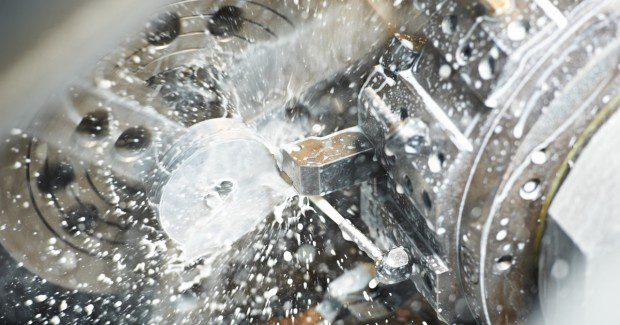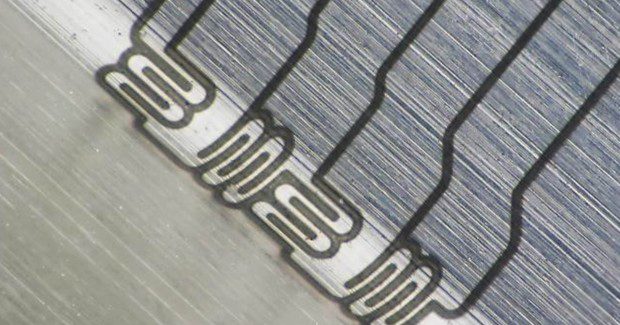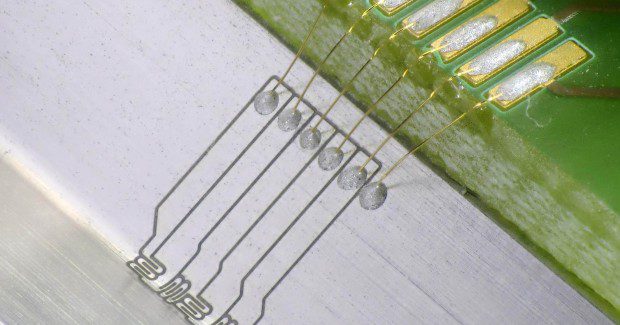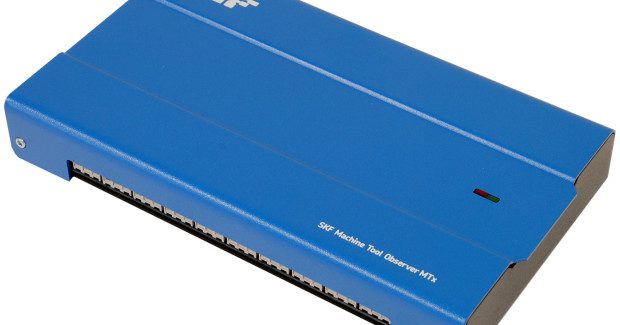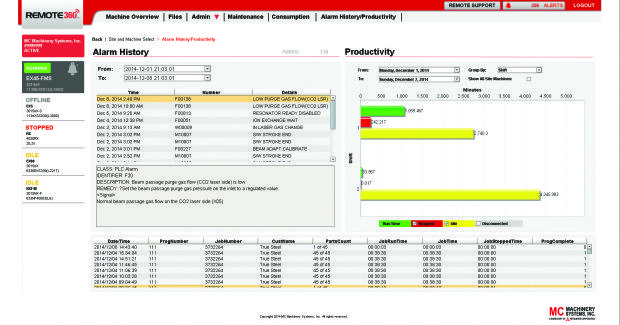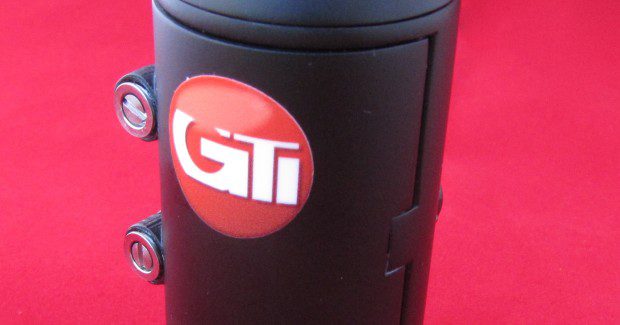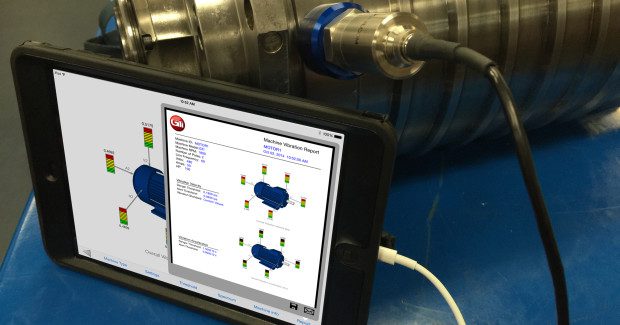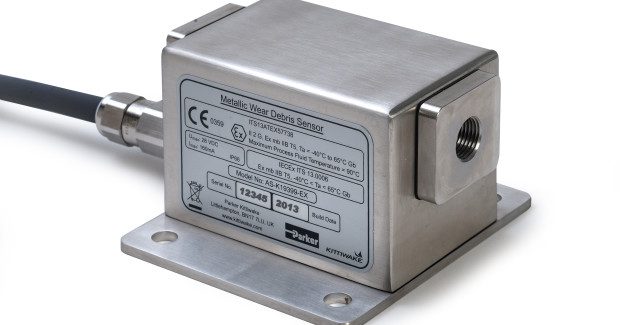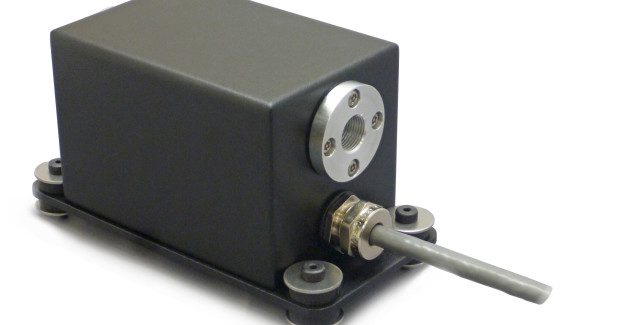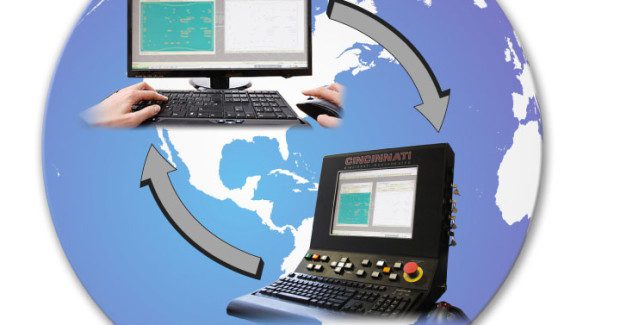Machines That Can Feel
Structural components of a machine tool now contain gauges that allow the machine itself to measure process stress and vibration. Here’s a review of this and other new developments in conditioning monitoring and predictive maintenance systems.
Posted: January 30, 2015
In the journey to gather information that monitors the condition of a machine tool, its process forces and vibration, and use that data for process optimization, scientists are now using tricks to make the slightest strain on parts of a machine tool visible. They have learned how to measure stresses on the fly or recognize a dull cutting tool at an early stage by using new types of gauges that have sensor modules built with gentelligent (genetic + intelligent) components that help a machine tool to “feel.”
This “feel” is the goal of Special Research Area 653 under the leadership of the Institute for Production Engineering and Machine Tools at the University of Hanover, together with Laser Zentrum Hanover e.V. (LZH; Hanover, Germany).
Building gentelligent sensors is not simple. Machine tools are usually very rigid so that process stress causes only minimal deformation or distortion. In order to be able to measure these deformations precisely, engineers use a trick where they place strain gauges in the bottom of grooves inside the machine components where stresses are highest and where stress gauges can make the most precise measurements. Up to now it was not possible to place strain gauges in the bottom of grooves because they are very difficult to access and their structures are usually complicated. Photolithographic sensors can only be used for flat surfaces and strain gauges on foils that are fixed to the machine tool using adhesives. This is not suitable for rough manufacturing process conditions.
The Laser-Micromachining group at LZH used a laser structuring process to develop an innovative sensor for complex, three-dimensional tooling components. An isolating layer and a sensor layer are coated directly onto the tooling component and the sensor is then structured using an ultrashort pulsed laser, with lateral resolutions from 10 to 100 µm. A laser scanner is used to ensure a fast structuring process. Since masks are not necessary, these high-quality thin-film sensors can be economically produced in small and medium-sized lots.
The first prototypes of these laser-structured sensors have already been integrated into the Z-axis slides of a machine tool. Strain tests show that these sensors can measure even the smallest stresses, down to 0.001 percent. This work took place within the framework of the SFB project “Gentelligent Components in Life Cycle” and have been financed by the German Research Foundation (DFG) since July 2005.
Laser Zentrum Hanover e.V., Hollerithallee 8, D-30419 Hanover, Germany, +49 511 2788-151, Fax: +49 511 2788-100, www.lzh.de.
INTELLIGENT MACHINE TOOL MONITORING
The Machine Tool Observer MTx from SKF USA, Inc. (Lansdale, PA) serves as a single device connecting all operating-parameter sensors to actively monitor, observe, and log the performance history of machine tool spindles, grinding machines, or other rotating equipment. This flexible solution collects information about the accumulated condition levels of a machine tool via the connected sensors to provide intelligent monitoring with continuous recording and long-term storage of critical operating data.
The MTx can be used as a stand-alone unit or integrated into a control system, whether for OEM or end-user applications. The technology ultimately supports preventive maintenance objectives by helping to detect operating abnormalities before they can escalate. The system consists of a microcontroller-based electronics assembly with internal memory for data storage in real time. The electronics assembly can be connected to up to six different sensor types for monitoring vibration, speed, temperature, humidity, eddy probes, and oil streak, among other parameters. It supports a wide range of different types of sensors, where a maximum of 14 of these sensor types can be connected at the same time.
The system compiles detailed documentation of machine tool history and working conditions and enables traceability of incidents by accurately logging their duration, date, and time. For parameterization and data presentation, a sophisticated Server/Client software package has been developed for standard Ethernet (LAN) interface with DHCP/IP protocol. The software package allows shops to effectively manage and run multiple units installed on a PC, network, or over the Internet. Each connected sensor can be monitored online for ongoing accessibility and shared evaluation.
The compact MTx is easy to install and requires minimal wiring. Two relay outputs can be configured for alarm or emergency stops and email alerts can be generated, based on predetermined sensor limits.
SKF USA, Inc., 890 Forty Foot Road, Lansdale, PA 19446, 267-436-6577, Fax: 267-436-6001, www.skf.com/MTx.
MONITOR LASER CUTTING PROCESS FROM DESKTOP AND MOBILE
MC Machinery Systems, Inc. (Wood Dale, IL), a subsidiary of Mitsubishi Corp, offers a software solution to provide production monitoring, support and transparency to the laser cutting process. MC Remote 360 provides owners and operators with real-time data to increase productivity, improve efficiency and reduce downtime for MC Remote 360-enabled machines.
Current machine tools supporting MC Remote 360 are the NX Series, NX-F Series, RX Series, eX Series and XL Series. Other machines that will support the system soon include the LVPlus Series (with Windows XP) and the LVPlusII Series. The machine-monitoring module provides the ability to monitor MC Remote 360-enabled machines from a PC or mobile device. Various aspects of the machine, such as run, stop and idle time, are tracked and analyzed to provide insight on potential process improvements.
This new monitoring system has many exciting features, including real-time access to an extensive amount of data about the machine state, machine status and production performance, as well as a view of the program header. MC Remote 360 also includes access to machine backup files via the cloud, user alerts and notifications, and maintenance monitoring. Remote Diagnostics & Fault Monitoring provides real-time support and troubleshooting if issues arise with a machine by notifying an MC Machinery support staff member in the event of a problem, who will then help the machine owner troubleshoot the issue via remote machine feedback or schedule an onsite visit.
Remote Support Service also allows issues to be diagnosed and resolved while using the remote support module, potentially eliminating the need for an onsite visit. With the press of a button, the operator can grant technicians the ability to view all of the screens, change parameters, or upload/download program and material files.
MC Machinery Systems, Inc., 1500 Michael Drive, Wood Dale, IL 60191, 630-616-5920, www.mcmachinery.com.
REMOTE CONDITION MONITORING THROUGHOUT THE SHOP
GTI Predictive Technology (Manchester, NH) offers wireless accelerometers that work in conjunction with their iPad Vibration Analyzer to provide live, streaming waveform and spectrum data on machine tools. This versatile product can be powered through a changeable battery or powered through the USB port so that shops can permanently mount these accelerometers or use them as a more convenient and safer version of the wired version. The wireless accelerometer also includes a second input port that accepts either a tachometer or a second accelerometer. This expansion port allows for balancing and other applications that require a second channel of input.
The robust and sturdy design makes all of the ports on the accelerometer waterproof so that it can be permanently mounted outside. The construction of the accelerometer also provides drop protection. A platform of different existing apps work in conjunction with iPad-enabled accelerometers and tachometers right out of the box.
Going forward, the wireless accelerometer will be able to do things never possible with the wired version. A future update will enable shops to name their accelerometers and quickly switch between different accelerometers to make vibration route data collection as simple and easy as possible. This wireless accelerometer is another step in making that even easier.
The VibePro product family has been developed for the iPad as solutions for vibration analysis, dynamic balancing, infrared thermography and shaft laser alignment on a single device. This technology has enabled one of the most seamless and easy to use predictive maintenance packages in the market. Using the iPad as our product platform allows GTI to offer predictive technology performance for one-quarter of the cost of comparable systems on the market today. These solutions include:



